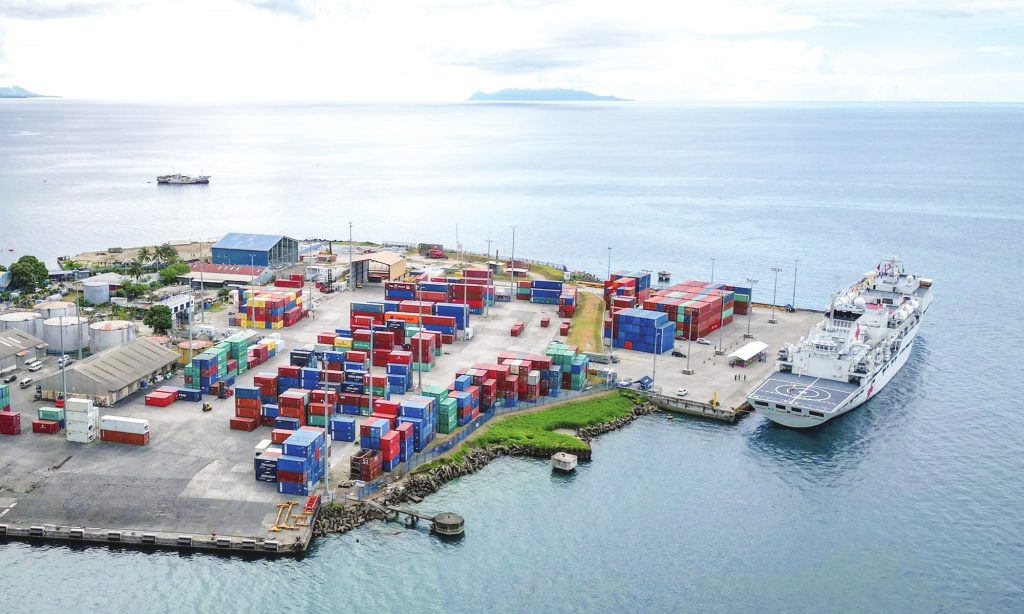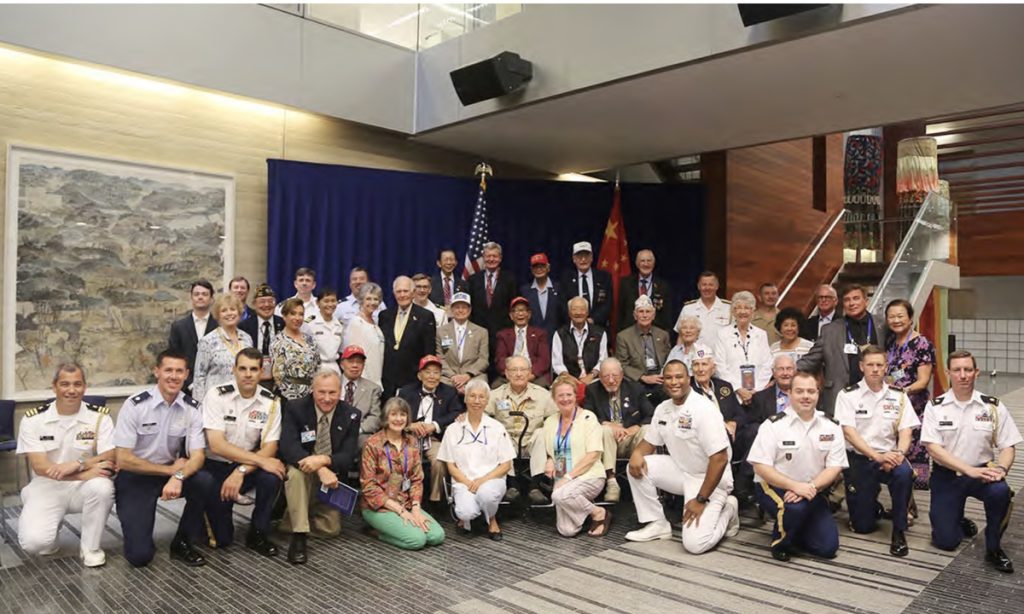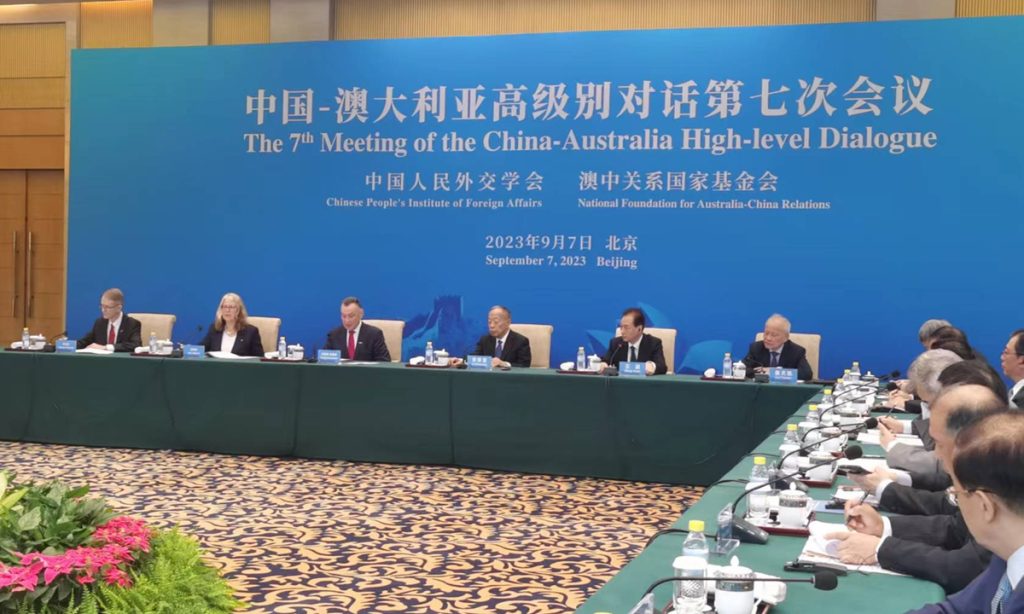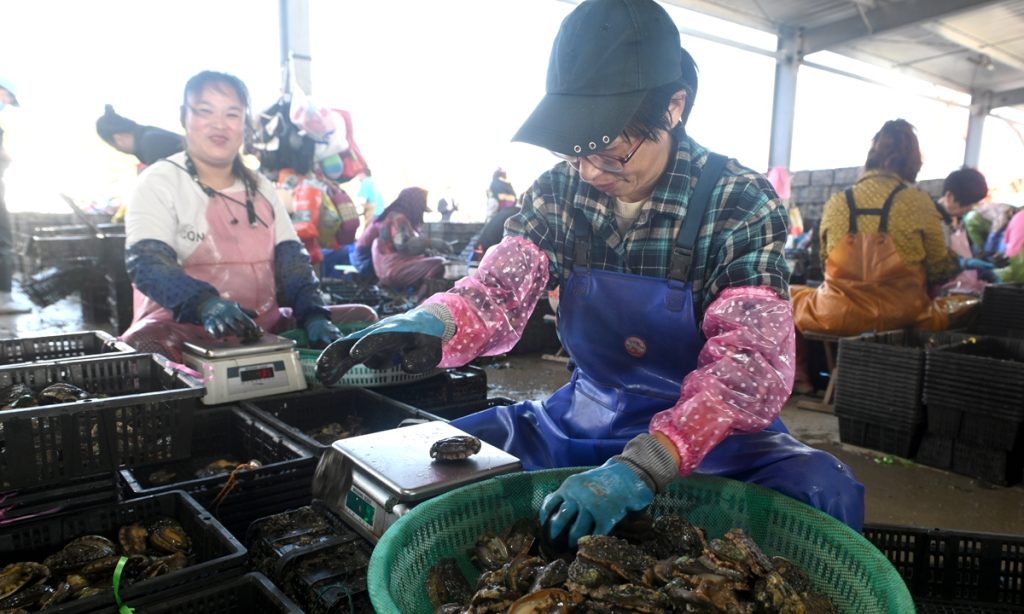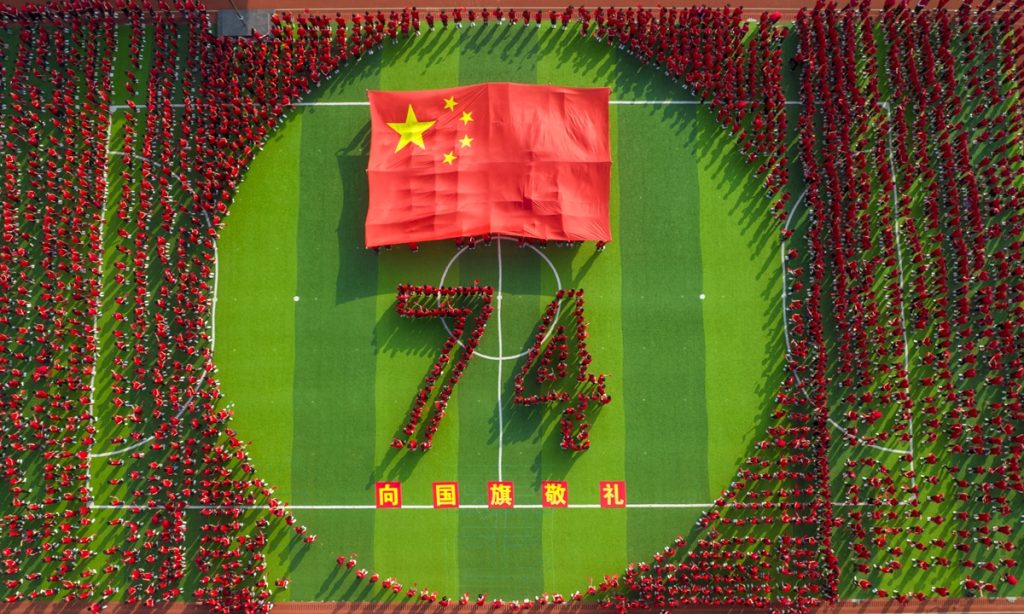Xiconomics in Practice: Xi’s inspection tour in Jiangsu underlines innovation, high-quality development
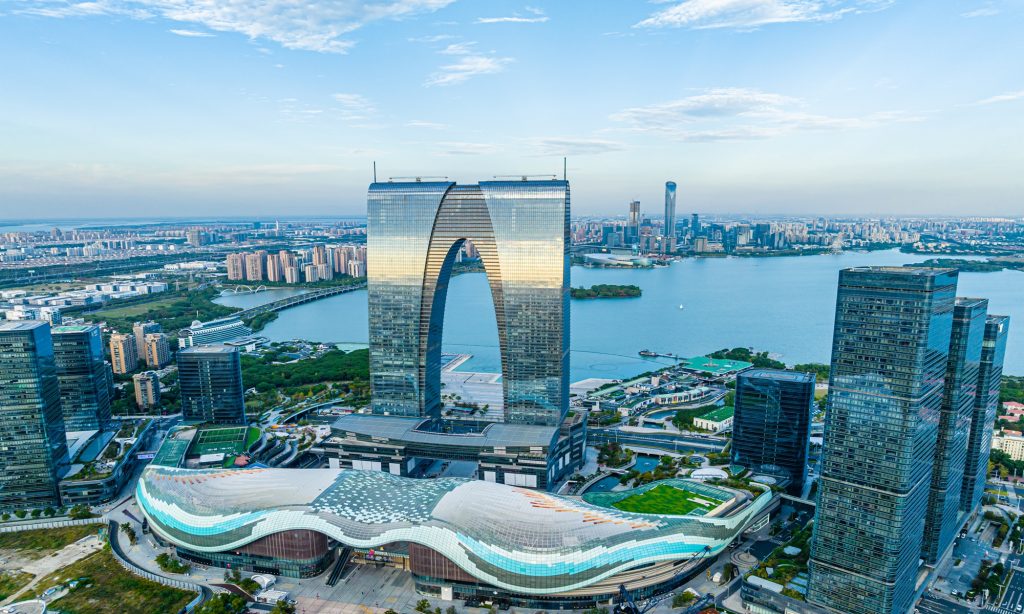
Editor's Note:
Since 2012, China has witnessed an extraordinary economic transition, with historic achievements in all aspects of the economy from its size to quality. Such an unparalleled feat does not just happen, especially during a tumultuous period in the global geo-economic landscape and a tough phase in China's economic transformation and upgrading process. It was Xi Jinping Thought on Socialism with Chinese Characteristics for a New Era that guided the country in overcoming various risks and challenges, and in keeping the China economic miracle alive.
As China embarked on the quest to become a great modern socialist country amid global changes unseen in a century, Xi's economic thought has been and will continue to be the guiding principle for development in China for years to come, and have great significance for the world. What is Xi's economic thought? What does it mean for China and the world? To answer these questions, the Global Times has launched this special coverage on Xi's major economic speeches and policies, and how they are put into practice to boost development in China and around the world.
Inside a bright white building at the Suzhou Industrial Park in Suzhou, East China's Jiangsu Province, the tidy, futuristic environment exudes a palpable sense of exquisite technology. On the walls of the lobby, the atrium as well as the research and development (R&D) workshop, inspirational slogans offer more clues about the significance of the place: "Innovation-driven, Self-reliance, and self-fortification" and "Climbing the peak of technology."
The building is home to the Suzhou HYC Technology Co, founded in 2005. The company prides itself as the world's leading manufacturer of flat panel display touch detection equipment and one of the most competitive semiconductor testing equipment providers in China, according to the China Media Group.
Success in R&D over the years has propelled the private company to be the first firm listed on the Shanghai Stock Exchange's new Science and Technology Innovation Board, or the STAR market, a NASDAQ-style board for tech firms. That has also positioned the company at the forefront of China's drive for tech self-reliance and self-fortification.
On July 5, Chinese President Xi Jinping visited the company during an inspection tour of Jiangsu, where he visited Suzhou and Nanjing, the provincial capital, and toured other facilities including an industrial park, business enterprises, a historic and cultural block, and a science lab, according to the Xinhua News Agency.
Xi, also general secretary of the Communist Party of China (CPC) Central Committee, urged Jiangsu to take the lead in advancing Chinese modernization, pointing out that the key to Chinese modernization lies in the modernization of science and technology.
The president's inspection tour not only reflected the high hopes for Jiangsu's bigger role in the pursuit of Chinese modernization but also further highlighted Chinese path to modernization, in which technological innovation and high-quality development are of paramount importance, business insiders and analysts said.
Such a personal focus is crucial in leading the country toward tackling major technological and development bottlenecks, amid an increasingly complex and severe international geopolitical environment, they noted.
Encouragement for breakthroughs
Xi's focus on breakthroughs in core technologies such as semiconductor testing was on vivid display during his visit to the Suzhou HYC.
"The president stopped at the semiconductor testing area for a relatively longer period, asking me about the performance of the equipment, the progress of research and development, including making detailed inquiries, and the yield rate of the chips was tested," Chen Wenyuan, chairman of the Suzhou HYC Technology Co, told the Global Times.
Chen said that he briefed him about some domestic high-end requirements. "Both the hardware and software systems are developed by us independently. At present, this can solve some domestic high-end requirements for digital chip testing," Chen said. "The president gave me the impression that he is very amiable and approachable. During the visit, he encouraged us to climb to peak of technology on numerous occasions."
Encouraging companies and researchers to develop technologies was a general theme of Xi's inspection tour in Jiangsu. At the Suzhou Industrial Park, Xi emphasized the crucial role of hi-tech parks in achieving self-reliance and self-strength in science and technology.
As the US and some of its allies continue to step up technological crackdowns on China, including restrictions on chip exports among other high-tech components to China, in an attempt to contain the world's second-largest economy, achieving self-reliance and self-fortification has become a top priority for China. This has also become a major focus in Xi's major speeches and inspection tours.
On Tuesday, a meeting of the central commission for deepening overall reform stressed the need to be prepared to deal with worst-case and extreme-case scenarios to promptly improve national security systems and mechanisms. While presiding over the meeting, Xi stressed that it is important to advance the reform of the remuneration system for university teachers and research personnel as a pivotal boost toward the development of education, science and technology, and talent.
At the meeting, various documents, including those establishing new systems for a higher-level open economy to build a new development paradigm and reform of the remuneration system in higher education institutions and research institutes, were examined and approved.
In Nanjing, Xi visited the Purple Mountain Laboratories, where he inspected a 6G comprehensive lab, among others, to learn about efforts being made toward major sci-tech breakthroughs. While inspecting the NARI Group Corporation, Xi learned about the enterprise's efforts in developing core technologies, ensuring grid security and power supply, and promoting energy transition.
"The goal of Xi's inspection tour in Jiangsu was to clearly emphasize innovation-driven development," Cong Yi, a professor at the Tianjin University of Finance and Economics, told the Global Times, noting that the report to the 20th CPC National Congress underscored the importance of high-quality development.
"An important connotation of high-quality development is innovation. In the face of increasingly fierce international competition, it is very important for us to achieve innovation-driven development," Cong said, adding that Jiangsu offers a great example in pursuing innovation-driven, high-quality development.
High hopes for economic powerhouse
The president's trip to the economic and technological powerhouse came just four months after he participated in a deliberation with deputies from a Jiangsu Province delegation at the first session of the 14th National People's Congress during the two sessions in March, where he stressed that high-quality development is of top priority in building China into a modern socialist country in all respects.
This reflected the great importance attached to and high hopes for Jiangsu's bigger leading role in advancing Chinese modernization, thanks to its strength in various aspects, including innovation and manufacturing.
During the inspection tour, Xi lauded the strengths of Jiangsu's solid industrial foundation, rich scientific and educational resources, sound business environment, and huge market share. He urged the province to continue to play an exemplary role in promoting reform, innovation, and high-quality development, as well as in contributing to China's efforts in fostering a new pattern of development.
In 2022, Jiangsu's total R&D investment reached 370 billion yuan, up 60 percent from 2017, contributing more than 12 percent of China's total, according to local official data. Jiangsu's R&D spending accounted for more than 3 percent of its GDP for the first time, on par with that of innovative countries and regions. There are more than 37,000 high-tech firms in the province.
Located in the Yangtze River Delta region, Jiangsu is one of the most developed provinces in China in terms of manufacturing, and also a leader in the country's sci-tech innovation and industrial upgrading, and has seen fruitful outcomes in a variety of aspects, Tian Yun, a Beijing-based economist, told the Global Times.
The Suzhou Industrial Park is an embodiment of the province's strengths in the high-tech and manufacturing sectors. Established in 1994, the park, which covers an area of 278 square kilometers, is home to 2,489 nationally grown high-tech enterprises, according to official data.
The output value of high-tech industries at the park accounts for 74.8 percent of the total output value of industries above a designated size, and in comprehensives when evaluated among other national economic development zones, the park has ranked first for seven consecutive years.
"Our success so far would be impossible without the support of the complete supply chains of the Suzhou Industrial Park, the city of Suzhou, and the Yangtze River Delta," Chen said.
Local entrepreneurship, global cooperation
Such complete supply chains and overall economic and technological strength inspire great entrepreneurship among the locals, including those in completely different sectors apart from the high-tech industry. And such, entrepreneurship is vibrant in every corner of Suzhou.
Not far from the Suzhou Industrial Park sits the Pingjiang Historic and Cultural Block, known for its rich history spanning over 2,500 years. Different from the futuristic features at the industrial park, Pingjiang possesses an artistic and harmonious atmosphere paired with the ubiquitous sights of street art and residents tending to their plants and pets.
During his trip to Suzhou, Xi also visited the area, noting that the fine embodiment of traditional Chinese culture in qualities such as resilience, patience, and perseverance, have become an integral part of the Chinese national spirit.
Zhang Yingying, head of the Niujiaqiang Community in the Pingjiang sub-district, vividly recalls the scene of the president's visit. "He told us that this place is filled with historical sites, scenic spots, and culture, and living here is truly fortunate. The words resonated deeply with the crowd… and I, too, was among the crowd, and my eyes welled up with tears as I pondered the profound meaning behind the residents' overwhelming happiness," Zhang told the Global Times.
Having moved to this particular community in 2008, Zhang has since witnessed the implementation of various livelihood projects aimed at improving the quality of life for the residents, from the installation of modern toilets to solving the problem of clothes drying, and organizing once chaotic electrical wires.
Zhang said that in recent years, the community has experienced a surge in entrepreneurial spirit, with more and more individuals willing to start businesses, open guesthouses, and establish trendy cafes, breathing new life into its historic streets.
During the visit, Xi also said that Suzhou has excelled in blending tradition with modernity, simultaneously promoting historical and cultural inheritance and boosting high-tech innovation and high-quality development.
This also resonates deeply with Lu Jianying, an inheritor of the Suzhou embroidery tradition, a form of intangible cultural heritage. A third-generation inheritor from a family of embroiderers, Lu began practicing embroidery at a very young age and has been involved in the craft for decades. She owns an embroidery shop in the Pingjiang Historic and Cultural Block.
Xi visited the shop and showed interest in the traditional art, which dates back over 2,000 years, according to Xinhua.
Lu recalled that the president keenly examined the showcased works and listened intently to the introduction. "Upon hearing his words, I felt a warm feeling in my heart, a feeling of artistic recognition," Lu told the Global Times, noting that she plans to collaborate with her daughter to better promote Suzhou embroidery with the help of the internet and cultural and creative products.
Suzhou has another calling card - a major hub for international cooperation. The Suzhou Industrial Park, specifically, which is a major cooperation project between China and Singapore, is known as "a major window for China's reform and opening up" and "a successful example of international cooperation."
As of June 2023, the park had attracted 104 Fortune 500 companies carrying out 174 projects, with the total investment in foreign capital reaching $40 billion, according to official data. At the end of 2022, the park hosted more than 200 R&D facilities from multinational companies, according to official data.
During his visit to the park, Xi emphasized expanding international cooperation to build world-class hi-tech parks that are open and driven by innovation.
For many companies like the Suzhou HYC, even as they continue to pursue independent technological innovation, global cooperation is still an integral part.
